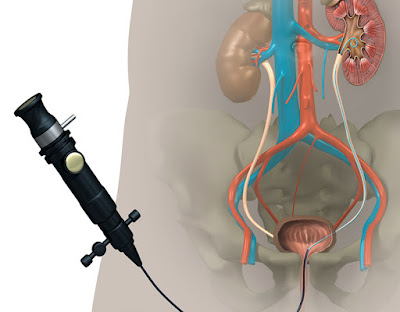Ureteral Stents; A Thin Tube That Is Placed in the Ureter to Drain Urine from the Kidney
 |
| Ureteral Stents |
A Ureteral
Stents or ureteric stent, is a thin tube inserted into the ureter to
prevent or treat obstruction of the urine flow from the kidney. It is a thin
tube that is placed inside one or both of the ureters (tube-like structures
that transport urine from the kidney to the bladder). A doctor may recommend
that a stent be put into the ureter if it is blocked by stones, scar tissue
from surgery, or the blockage caused by an inherited condition. Ureteral stent
placement is a surgery to place a soft plastic tube in the ureter. Ureteral stents
are used to hold ureters open.
Ureteral
Stents
are widely used throughout urology to facilitate drainage of the kidney and
ureter. They are often used when the urinary tract becomes obstructed,
typically by kidney stones. People may need them due to ureteral obstructions
from kidney stones, ureteral stones, narrowed ureters or tumors. A ureteral
stent may be left in place for several days or for as long as several months. Most
stents are temporary, but some people with chronic problems need them for a
longer time. A doctor will remove it when it is no longer needed.
Five types of ureteral metal stents (MSs) have
been clinically used in the upper urinary tract; self-expandable, balloon
expandable, covered stents, themoexpandable shape memory stents, and the lately
introduced all metal double pigtail stent. Clinical experience with these
stents demonstrates that they impose a promising alternative treatment option
in ureteral pathologies that are difficult to be treated via common polymeric
stents. Thus, with the rise in burden of urological disorders, the demand for ureteral
stents is also increasing worldwide.
In the U.S Food and Drug Administration’s
(FDA’s) regulation, 21 CFR 876.4620 (a), the Ureteral Stents is described as a tube-like implanted device that is
inserted into the ureter to provide ureteral rigidity and allow the passage of
urine.



Comments
Post a Comment